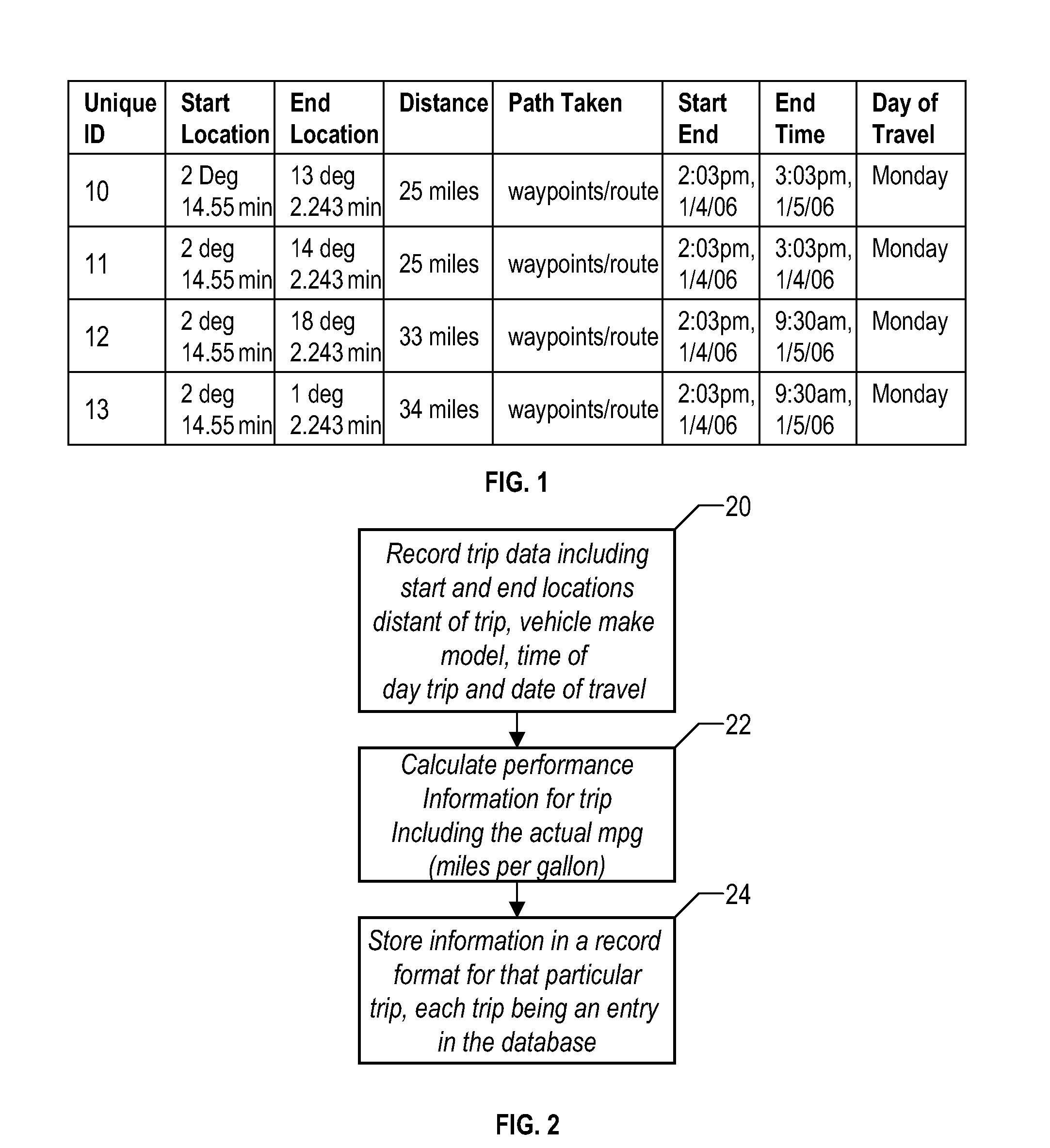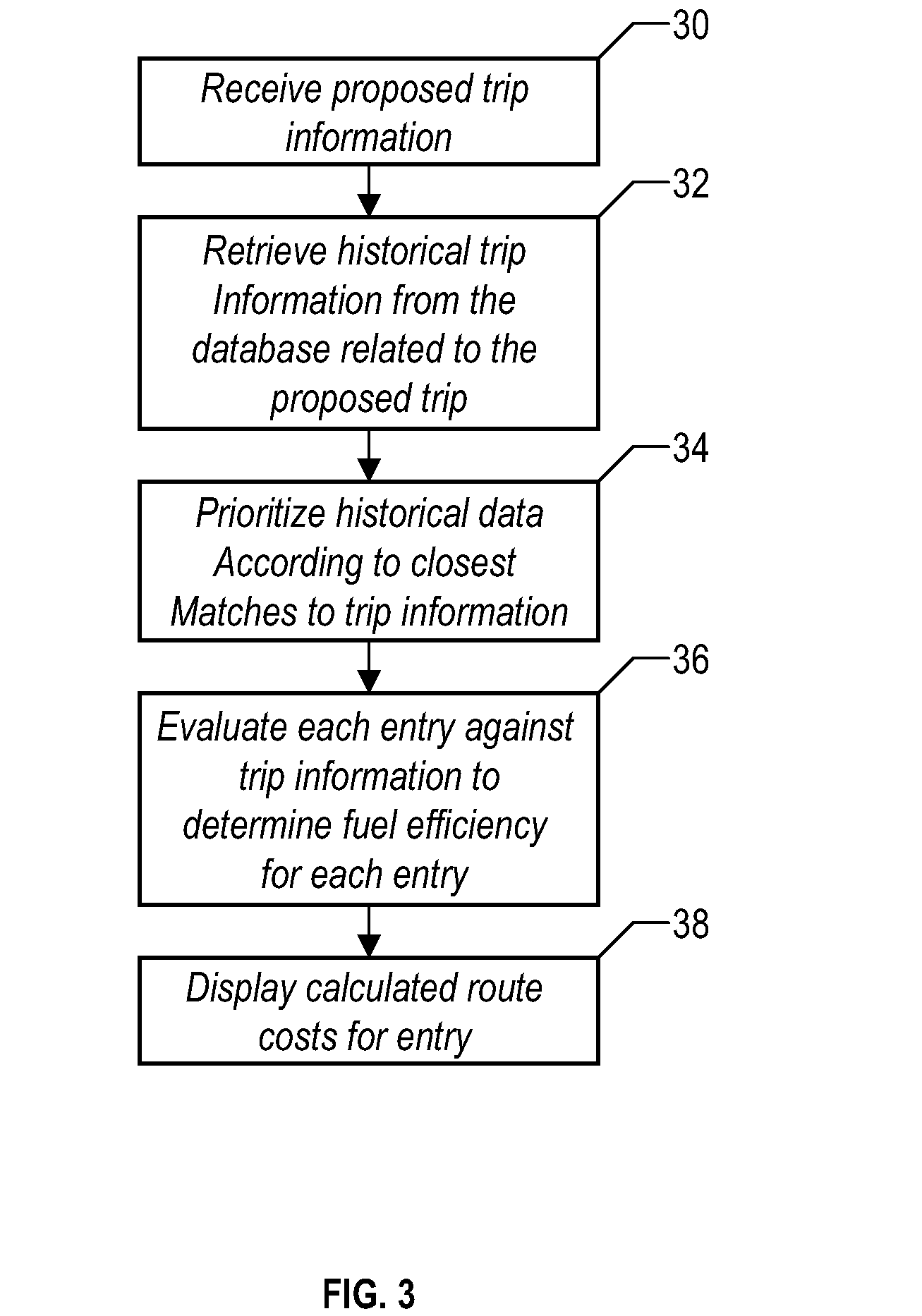Method and system for calculating least-cost routes based on historical fuel efficiency, street mapping and location based services
a technology of historical fuel efficiency and route calculation, applied in the field of method for calculating optimum fuel efficiency routes, can solve the problems of increasing the consideration of fuel cost for travelers, no known solution to address the problem, and the present-day techniques are totally limited to the realm of fastest time, so as to achieve less fuel, less time, and maximum fuel efficiency
- Summary
- Abstract
- Description
- Claims
- Application Information
AI Technical Summary
Benefits of technology
Problems solved by technology
Method used
Image
Examples
Embodiment Construction
Simplex Optimization
[0022]One way of optimizing a process or system is by non-systematic “trial and error” and another way is by changing one control variable at a time while holding the rest constant. Both of these methods are time-consuming and are ineffective at taking into account dynamic changes in the process or system, for example, changes in the composition of the fuel in a combustion process or system. In 1962 an efficient sequential optimization method called the basic simplex method was presented by Spendley et al in an article called “Sequential Application of Simplex Designs in Optimization and Evolutionary Operation” in Technometrics Vol. 4, No. 4, November 1962, pages 441-461. The basic simplex method is based on an initial set of k+1 trials where k is the number of variables. This number of trials corresponds to the minimum necessary for defining a direction of improved response and is an economical and timesaving way to start an optimization project.
[0023]The presen...
PUM
 Login to View More
Login to View More Abstract
Description
Claims
Application Information
 Login to View More
Login to View More - R&D
- Intellectual Property
- Life Sciences
- Materials
- Tech Scout
- Unparalleled Data Quality
- Higher Quality Content
- 60% Fewer Hallucinations
Browse by: Latest US Patents, China's latest patents, Technical Efficacy Thesaurus, Application Domain, Technology Topic, Popular Technical Reports.
© 2025 PatSnap. All rights reserved.Legal|Privacy policy|Modern Slavery Act Transparency Statement|Sitemap|About US| Contact US: help@patsnap.com



